In household electrical engineering, the word "automatic"Implies a type of device that automatically turns off the voltage during overloads, or a short circuit (short circuit) in the network. It has been used from the very beginning of the emergence of electrical engineering to protect networks and electrical appliances. In recent decades, protective shutdown devices (abbreviated as RCDs) from the damaging effects of electricity have gained mass popularity.
But misunderstanding by users, and sometimes by electricians, of the differences and purpose of these protective equipment, led to cases of installation, as a result of which there were
fires, since this device does not turn off even with a short circuit and burns, while arranging a fire and smoke in the switchboard.
Manufacturers of electrical protective devices quickly responded to this common mistake and created a combined electrical protective device that contains an overcurrent circuit breaker and a shock protection device in one module, called a differential circuit breaker, which is also called a difavtomat, differential switch, (RCBO).
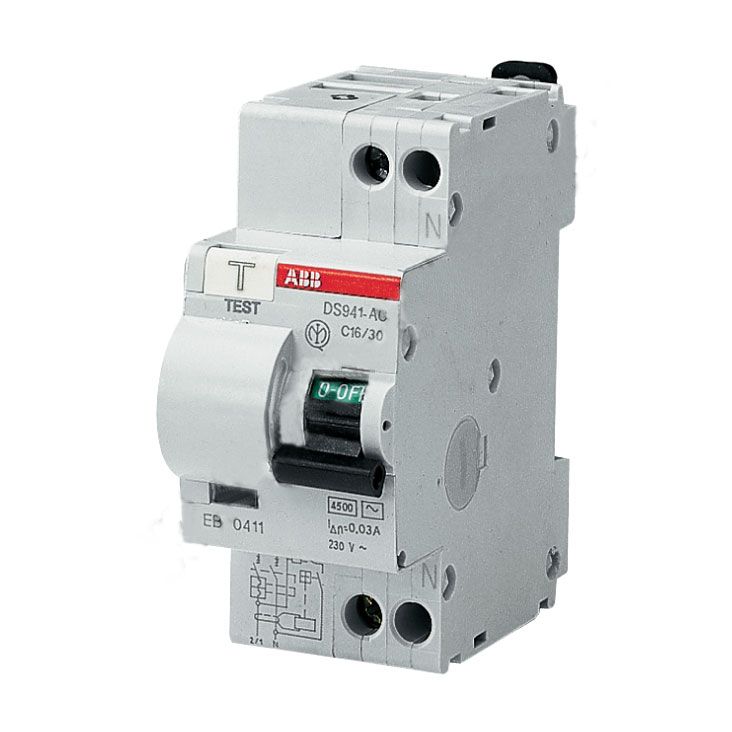
Appearance of difavtomat
Some characteristics
The differential machine is used for:
- protection against overcurrent and short circuit;
- prevention of electric shock in case of accidental contact with a bare wire, or faulty equipment that caused voltage to appear on the case;
- prevention of fire hazardous leakage during insulation breakdown.
The difavtomat is a modular device mounted on a din rail, it has four terminals for a single-phase network, and eight for a three-phase one. Regardless of the manufacturer, these devices are characterized by the following common features:
- housing made of refractory non-combustible plastic;
- marked contact clamps (terminals) for connecting incoming and outgoing conductors;
- on/off lever. Some devices may have two;
- button " Test"For manual verification of the reliability of the device;
- optional signal beacon indicating the type of operation - from overload or leakage;
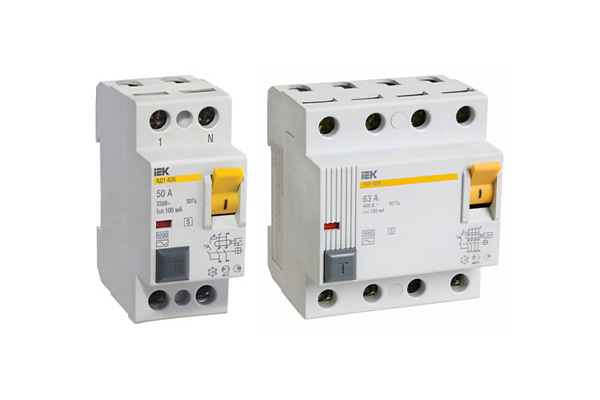
3-phase and 1-phase difavtomat
Accordingly, they have the following designations:
- manufacturer's logo, serial number;
- maximum short circuit current, A;
- operating voltage, V;
- a letter indicating the time-current characteristic of the circuit breaker;
- rated breaking current In, A;
- differential leakage current IΔn , mA;
- electrical circuit of the internal device of the device;
- terminal markings.
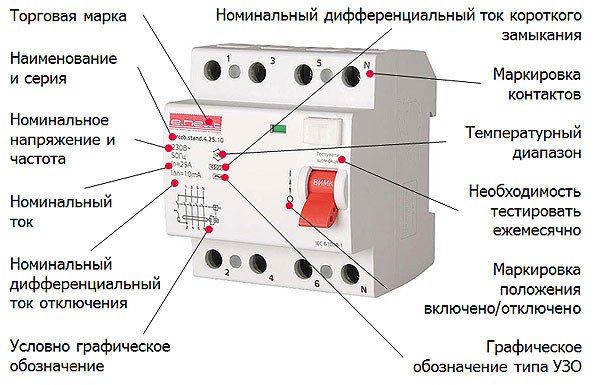
Characteristics of difavtomat
The device and principle of operation of the diffuser
The differential circuit breaker, which simultaneously performs the functions of a circuit breaker and an RCD, consists of:
- electromagnetic relay for overcurrent and short circuit protection;
- thermal splitter for shutdown when the rated current In is exceeded for a long time;
- differential current sensor, to turn off the circuit when leakage occurs in it.
If the parameters allowed for each device are exceeded, they mechanically act on the latch of the spring-loaded tripping mechanism with an arc extinguisher.
The electromagnetic and thermal splitters are identical to those of a separate current circuit breaker. Their work is described in detail in the relevant sections. Briefly, important features should be noted:
At a high current, many times greater than In, an electromagnetic relay almost instantly trips, pulling out the latch and turning off the differential machine.
The thermal relay, made in the form of a bimetallic plate, pressing on the valve of the shutdown mechanism as it is heated by currents exceeding In, turns off in the period from a second to several minutes, depending on the time-current characteristic, denoted in Latin letters, similar to conventional circuit breakers. This design solution allows you to withstand large impulse loads without opening the circuit.
![]()
The insides of the RCD
The differential circuit breaker is triggered when a difference (in English different) is detected in the currents flowing in the phase and neutral wires, which in an ideal system should match. Figuratively, this picture can be represented as a certain number of electrons flowing through the input phase conductor, branching into individual consumers and doing work in them, again flowing together in the zero conductor, and none should be lost.
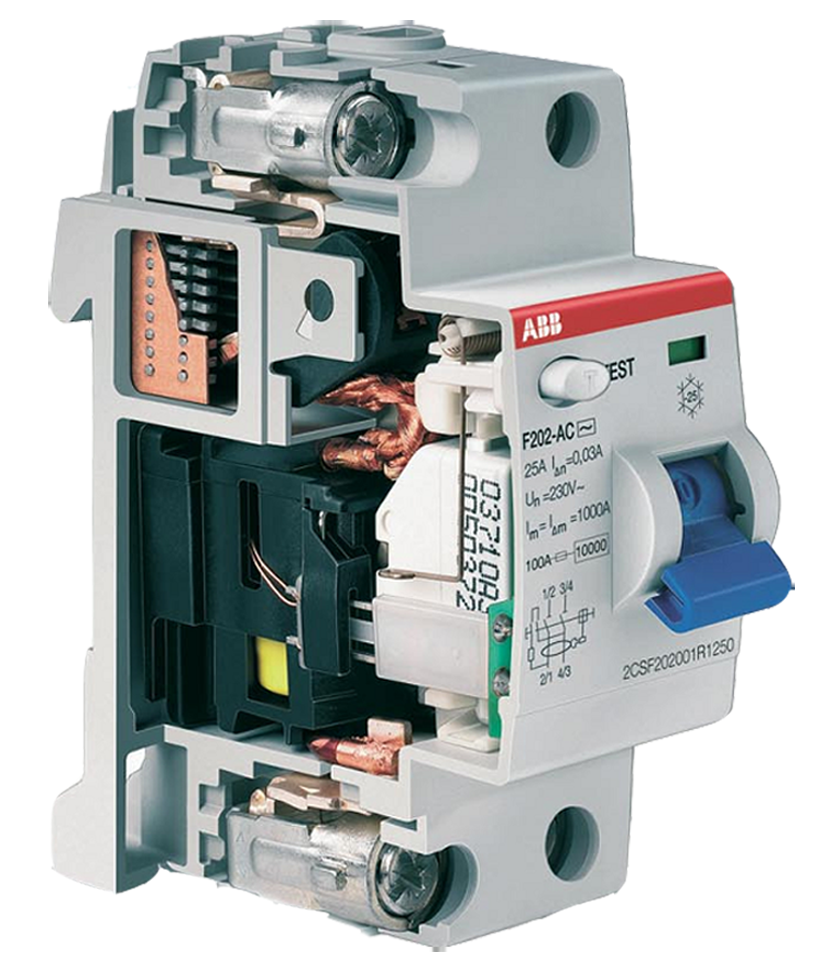
Half disassembled difavtomat
Loss refers to the flow of electrons into the ground through the human body, causing damage, or through poor insulation, which is a fire hazard. In the event of leaks, the neutral wire current will be less due to the fact that some of the charge carriers are lost along the way.
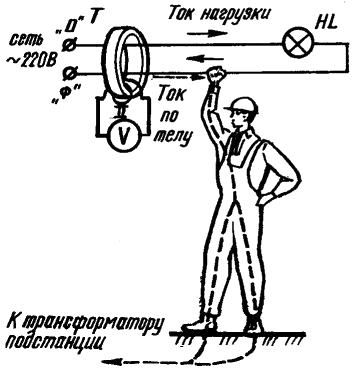
A visual diagram of the operation of the difavtomat in the network
The measurement of the difference in current flowing in the phase and neutral wire is, and its combination with a circuit breaker made it possible to combine a differential machine. This difference is measured by a differential current sensor made in the form of a toroidal transformer, in which two primary windings are connected in different directions in the phase and zero circuits, respectively, and the third secondary winding is connected to the actuator.

In the normal mode of operation of the power supply system, when the currents of the primary windings are equal, the magnetic flux created by them is mutually compensated. In the event of leakage, the current in the neutral wire will be less, the balance of magnetic fluxes will be disturbed, and a current will appear in the secondary winding, causing the protection device to operate.
Lethal for a person is an electric current of only 0.1 A, or 100 mA. Accordingly, a difavtomat with IΔn should be used for protection<100мА. Наиболее популярными являются значения IΔn=30мА.
A current of more than 100 mA at a voltage of 220V is considered capable of releasing enough heat to ignite the insulation at the place of its breakdown, therefore, a differential machine with such a value of IΔn is used to ensure the fire safety of large objects.
In the case of using a three-wire network with a grounding conductor PE, in the event of an electrical breakdown on the insulation case in a faulty device, the difautomat will turn off immediately. If this malfunction occurs in a device connected to a two-wire network, and the metal case is energized, then when a person touches it, a current greater than IΔn will pass through it, causing the protection to operate very quickly, so the damage will be minimal, the victim will get off with shock.
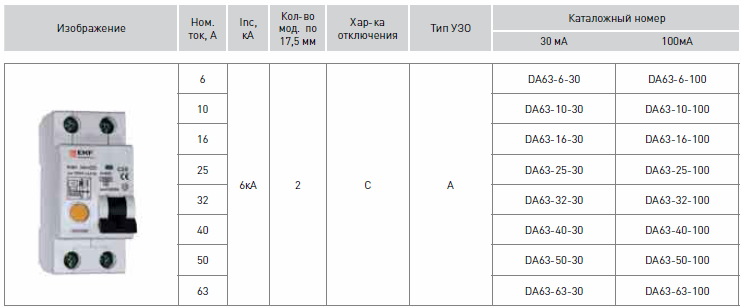
some types of difavtomatov
In order for the differential machine to work reliably and there are no false positives, the correct installation of this equipment is necessary. You need to remember the rule: input and output zero are completely different concepts, the outgoing neutral wire should not come into contact with the ground or any other neutral conductors anywhere. Otherwise, the device will operate when any load is connected.

